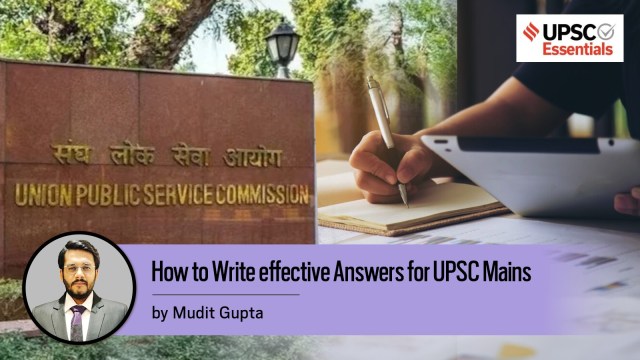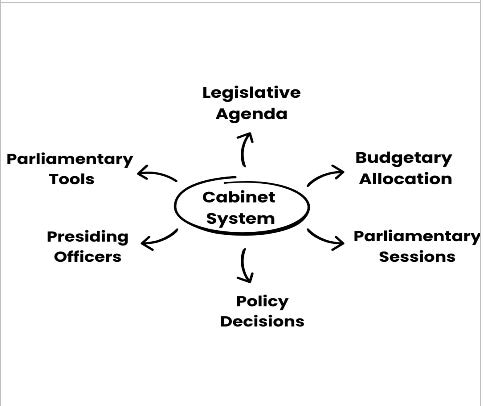© IE Online Media Services Pvt Ltd
Latest Comment
Post Comment
Read Comments
 How should a beginner approach mains questions for the first time, and what are the 3 steps they should break it down into?
How should a beginner approach mains questions for the first time, and what are the 3 steps they should break it down into?Mains Answer Writing in UPSC is one of the trickiest parts of the preparation. With UPSC Mains 2025 scheduled for August 2025, aspirants are shifting focus to the most challenging aspect of the exam. Since UPSC has never released an official Mains answer format, aspirants often find themselves in a state of confusion about what constitutes a “perfect answer.”
In the process of decoding the art of answer writing for Mains, let’s learn how to break down a question into smaller parts and then frame answers to each of the parts to write a decent and scoring answer.
Let us consider a previous year question (PYQ) of the UPSC Mains Examination:
The growth of the cabinet system has practically resulted in the marginalisation of parliamentary supremacy. Elucidate. (Answer in 150 words) – GS II, UPSC CSE Main Exam, 2024.
As a beginner, when one looks at this question for the first time, their task is to break down the entire question into the following 3 steps:
1.What are the most important keywords in the questions around which our answer should revolve?
2. Out of the total of 150 words, how many are to be devoted to the introduction, the body, and the conclusion? (Important: Within the body, how many words should be allocated in favour of the argument and how many words are to be devoted against the statement?)
3. Are there any thematic diagrams that can be drawn?
Once one has answers to these three questions, they have a very clear understanding of the question and can begin writing.
Let us break down the question in consideration into the 3 steps mentioned above.
| 1. Growth of the Cabinet System
2. Marginalisation of Parliamentary Supremacy 3. Elucidate |
Identification of keywords tells us that our answer should incorporate the following dimensions:
1. How has the Cabinet System grown in India over the past few years? Since the directive word is Elaborate, we have to give certain examples to corroborate our arguments, depicting the rising strength of the Cabinet.
2. Alongside, we also have to depict using examples as to how the strength of the Parliament has been overpowered by the Cabinet in recent times and how the Parliamentary agenda is controlled by the rising power of the Cabinet.
3. Whenever the directive word is “Elucidate”, we have to write 75% of the answer in favour of the argument and 25% of the answer depicting the other side of the coin.
4. So, once we have written about the rising power of the Cabinet and the marginalization of the Parliament, we need to use the 25% of the word limit to depict as to how the power of the Cabinet in India is not absolute and still there are Parliamentary checks over it in the spirit of “Separation of Power” and the overall “Basic Structure of the Constitution”.
Usually, in questions with the Directive Word “Elucidate”, maximum content is to be written in the Body with almost equal proportion of words for introduction and the conclusion. In this 150-word answer, we can do the rationing in the following manner:
Introduction – 20-25 Words
Body – 100 Words
Conclusion – 20-25 Words
It is always a good idea to supplement your Mains answer with relevant diagrams, wherever and whenever possible. In the question under consideration, we can try and depict our thought process with the help of a diagram like:

In the above diagram, keeping in mind the requirement of the question, I have depicted the areas where the rise of the power of the Cabinet is reducing the power of the Parliament ranging from the Parliamentary Sessions to the legislative business to the budgetary allocation to the Ministries to the announcement of major policy decisions by the Government without discussing them in the Parliament.
Such thematic diagrams give a bird’s eye view of the answer to the examiner, evoking the interest and the curiosity of the copy evaluator, forcing them to read the entire answer and giving your answer an edge over the others.
Once you are ready with the framework in mind and ready to write the answer, make sure you write sub-headings in the answer copy and underline them. This would make your answer more readable and give an evaluator an idea about the clarity of thought with which you have written the answer.
With regards to the question under consideration, we can depict the sub-headings in the following manner:

Pilot pens, which write smoothly on paper, are the best choice for Mains answer writing and are among the most commonly used pens.
Don’t beat around the bush. Answer only the parts of the question that you know. Making up stories or giving vague replies won’t fetch you marks. Filling up the answer sheet with irrelevant content is not what UPSC expects. Move on to questions—or parts of questions—that you are more confident about.
Practice as many questions as possible every day in an exam-simulated environment. Use a stopwatch to ensure you don’t exceed 5–7 minutes for a 10-marker and 10–11 minutes for a 15-marker question.
Aspirants initially start writing answers at a slow pace. Eventually, due to the paucity of time, they begin to scribble and spoil their handwriting as the exam time runs out. It is important to realise that, from an evaluator’s perspective, good handwriting is a very important aspect of answer writing. Good handwriting here means a legible, neat, and clean script. Complement a well-structured answer with good presentation and relevant diagrams to gain an extra edge in the exam.
Writing in paragraphs or points depends on the demand of the question. Points or bullet form are preferred by many when the answer is straightforward and needs to be easily readable. However, answers or essays that require a strong introduction and conclusion can have a mix of bullet points (in the body) and paragraph form.
(About our Expert: Mudit Gupta has been a mentor and faculty for the UPSC Civil Services exam for 8 years with expertise in CSAT, Polity, International Relations, and Current Affairs.)
For any queries and feedback, contact manas.srivastava@indianexpress.com
Subscribe to our UPSC newsletter. Stay updated with the latest UPSC articles by joining our Telegram channel – Indian Express UPSC Hub, and follow us on Instagram and X.
🚨 Click Here to read the UPSC Essentials magazine for July 2025. Share your views and suggestions in the comment box or at manas.srivastava@indianexpress.com🚨

Read UPSC Magazine